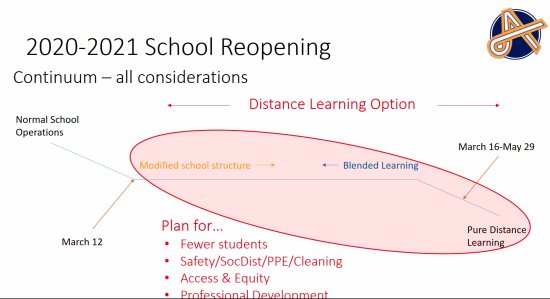Grammar learning is different from other academic subjects since grammar builds on prior knowledge. L2 learning goes beyond acquisition of linguistic features. The process includes communication, cultural awareness, the ability to compare and contrast L1 and L2, and the use of language skills with academic disciplines Here is a good definition of grammar: Grammar is the structure of a language. It is a set of rules specifying the ways words are inflected (how endings are added to change the meaning) and the ways individual words can be combined into larger units to form phrases, clauses, or sentences (ProLiteracy, 2013). Learn more about this topic by reading in on ExclusiveMultibriefs.
H Douglas Brown – Principles of Language Learning and Teaching
PDF #58 – H Douglas Brown – Principles of Language Learning and Teaching
Since its first publication in 1980, Principles of Language Learning and Teaching, here in its fifth edition, has served a number of purposes for many audiences around the world. For graduates or advanced undergraduates in language-teacher education programs, it is a textbook on the theoretical foundations of language teaching, a survey of what research has revealed about how human beings acquire a second language. For a surprising number of people it has become a book that Master’s degree candidates pore over in preparation for the SLA section of their comprehensive examinations or for references for their thesis research. For experienced teachers, it has become a handbook that provides an overview of current issues in the field with an index and bibliographic entries to aid in that overview.
Teaching English in Nepal
How much teaching English in Nepal is a myth and how much is reality? These are the major questions that teachers of the language, at all levels of education, are facing today. We will face this more strongly in the days to come. But one reality about English teaching is that it will grow, especially in terms of the need for this language in a world lashed by the storm of Covid-19.

I discussed some aspects of teaching English in Nepal and challenges at three virtual seminars in the third week of May 2020, at the invitation of the regional bodies, of the Sudurpaschim and Karnali provinces and Province 5, of Nepal English Language Teachers Association (NELTA) and the president of its central body Motikala Subba Dewan. Attended by a remarkable cohort of English teachers, from professors to the new entrants, these virtual seminars discussed very important issues—from methods and modes to the problems of English teaching in Nepal.
For Nepali learners, the use of English is related to mobility. They use the language for various domains of communication, direct or virtual. In these times the mobility of English language users shifted to social media and virtual modes of communication. But talking about the teaching of English, a few problems demand answers. They are, as we have discussed already, the accessibility to the internet; consequently, how the disruptions caused by pandemics affect teaching. This calls for discussions about the class system in pedagogy, in particular, and society, in general. One thing is certain, English is losing its hallowed position and entering a period of testing on whether it can prove its validity as a subject of education, communication, and personal relations. But teachers of English as a compulsory subject should work towards making it an effective, helpful medium of education, hope and humanism.
Learn more about this topic by reading in on Kathmandupost. Don’t forget to check more News on ESL teaching in our website.
The Asian EFL Journal Quartely
PDF #57 – The Asian EFL Journal Quartely September 2011
The Asian EFL Journal‘s quarterly September issue continues the tradition of providing EFL professionals throughout the world with insight into some of the most pertinent issues affecting language learning. Readers will be able to explore the work of researchers investigating a variety of perplexing topics of interest in an Asian context. Enriched with diversity, the world‘s largest continent provides scholars with a vast resource of distinct and varied language learning environments readily available for analysis. The articles presented in this issue are a true reflection from the heart of Asia with research originating from China, Japan, Korea, Singapore, Taiwan, and Thailand.
School districts struggle to help English language learners during COVID-19 crisis
Just a few months back, high school students learning English as a second language in the Adams 14 school district outside Denver spent 53 minutes a day in a special class dedicated to building up their language skills. When school buildings went dark and learning shifted online, that practice ended. High schoolers learning English in the heavily Hispanic, mostly low-income district started getting language assignments twice a week instead.
Learn more about this topic by reading in on Chalkbeat.
After reading “Joe Gilliland’s ‘A Teacher’s Memoir’ ” you can check important issues for ESL teachers on the section PDFs, and visit my YouTube channel.
Colin G DeYoung, Jordan B Peterson, Daniel M Higgins – Sources of Openness Intellect Cognitive and Neuropsychological
We characterize Openness/Intellect as motivated cognitive
flexibility, or cognitive exploration, and develop a neuropsychological
model relating it to dopaminergic function and to the functions of the
prefrontal cortex (PFC). Evidence is reviewed for sources of Openness/
Intellect shared with Extraversion and sources unique to Openness/Intellect.
The hypothesis that the cognitive functions of the dorsolateral PFC
are among the latter was tested using standard measures of cognitive
ability and a battery of tasks associated with dorsolateral PFC function
The Rising Value of the English Language
Professional Language Educator and Entrepreneur takes “small steps” to make big changes to the way English learners say “Hello, World!” A global entrepreneur found that teaching English in a classroom wasn’t going to help her make the impact on the world that she craved. So, she launched Go Natural English, a company that leverages the internet to teach English-speaking skills to individuals all over the world. English is the most widely spoken language on the planet, and learning it can really change your life. Learn more about this topic by reading in on CaliforniaHerald.
Influence of American English on British
PDF #55 – Katerina Pauliuc – Influence of American English on British

Although linguists admit that the change in the British English language comes, nowadays, from the American continent, there are some questions that constantly trouble the minds of those interested: how great this influence is, what areas of vocabulary it affects, whether this influence is perceived as a kind of corruption or it is a normal change, and what predictions could be made for the future of the English language in the given circumstances. Consequently, I state that this thesis is an attempt to find answers to all the above questions, given my interest in the two main varieties of the English language, British English and American English.
In the first chapter begins with a short history of the English language expansion, followed by a description of the geographical, social, and functional varieties of the English language. In the geographical varieties section, varieties of English worldwide are described, beginning in the United Kingdom and continuing on the American continent, then in Australia and New Zealand, Asia and the Pacific, ending on the African Continent. The last varieties on focus are hybrid languages, the pidgins and creoles based on the English language. In the United Kingdom, British English is described first, with careful attention paid to Received Pronunciation (RP), the basis for comparison between varieties of English spoken worldwide. Then Irish, Scottish and Welsh English are analyzed from both phonetic and lexical points of view. On the American Continent, I point out the features of English in the United States with its standard variety General American, through its relationships to British Received Pronunciation.
Learn more about this topic by reading DivaPortal.
After reading “ESL classes are improving the workplace” you can check important issues for ESL teachers on the section PDFs.
What will local schools look like when they reopen?

When Acalanes Union High School District Superintendent John Nickerson at the May 6 board meeting presented what the high schools will look like this fall, he did not lay down one, two or even three possibilities; he introduced a continuum of options that the school districts have to get ready for now, while facing uncertainties. For Lamorinda school districts, getting ready for all types of situations needs to happen over the summer, while the budget for next year looks quite grim, with a potential 10% reduction in income.
Learn more about this topic by reading in on LaMorindaWeekly.
After reading “Joe Gilliland’s ‘A Teacher’s Memoir’ ” you can check important issues for ESL teachers on the section PDFs, and visit my YouTube channel.
Muhammad Natsir, Dedi Sanjaya – Grammar Translation Method (GTM) Versus Communicative Language Teaching
Methodology is one of the important elements to implement he objective of education in teaching learning process particularly in English classes. To give the information about two phenomenal methods namely GTM and CLT is the main purpose of this scientific writing since GTM is commonly used previously and CLT is very famous nowadays. In so doing, the strength of this paper is to improve the knowledge of educational practitioners especially in method of teaching English. The comparison between the two methods is elaborated clearly in terms of the principles. The principles are characteristic of teaching learning process, nature of instruction, handling the students’ feelings and emotions, the role of native language of students, the language skills that are emphasized, and the way of teacher’s response to students’ errors. The more beneficial method nowadays is CLT but GTM also still has some positive things offer.
